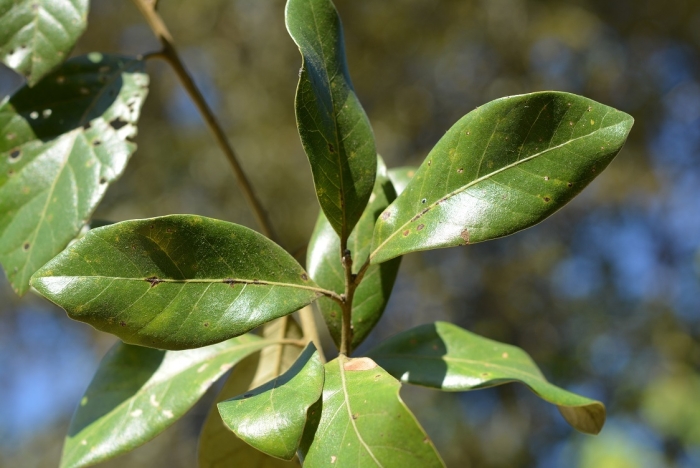Mexican Live Oak
(Quercus oleoides)
Mexican Live Oak (Quercus oleoides)
/
/

Neptalí Ramírez Marcial
CC BY 4.0
Image By:
Neptalí Ramírez Marcial
Recorded By:
Copyright:
CC BY 4.0
Copyright Notice:
Photo by: Neptalí Ramírez Marcial | License Type: CC BY 4.0 | License URL: http://creativecommons.org/licenses/by/4.0/ | Rights Holder: Neptalí Ramírez Marcial | Publisher: iNaturalist | Date Created: 2017-03-18T16:04:07-07:00 |






















Estimated Native Range
Summary
Quercus oleoides, commonly known as Mexican Live Oak or encina/encino in Spanish, is a slow-growing evergreen tree native to the tropical dry forests, open woodlands, and pasturelands of eastern and southern Mexico, extending through Central America to Guanacaste Province in Costa Rica. It typically reaches heights of 26 to 49 feet with a similar spread, and is characterized by its dense, rounded crown and thick, leathery leaves that are pale gray-green, measuring 1.5 to 4.25 inches long. The Mexican Live Oak is notable for its extended flowering season from December through May, during which it produces inconspicuous male and female catkins. The wood of Quercus oleoides is highly valued for its heavy, intercrossed grain.
This species is appreciated for its drought tolerance and ability to thrive in a variety of soil types, including those with poor drainage. It is often used in reforestation projects, as a shade tree in coffee plantations, and as an ornamental tree in dry landscapes. In cultivation, it requires minimal maintenance once established and can tolerate full sun to partial shade. While it is not commonly afflicted by serious pests or diseases, it can suffer from root rot in overly wet conditions. The Mexican Live Oak is not typically known for being invasive outside its native range, but its adaptability to different environments should be monitored to prevent potential invasiveness.CC BY-SA 4.0
This species is appreciated for its drought tolerance and ability to thrive in a variety of soil types, including those with poor drainage. It is often used in reforestation projects, as a shade tree in coffee plantations, and as an ornamental tree in dry landscapes. In cultivation, it requires minimal maintenance once established and can tolerate full sun to partial shade. While it is not commonly afflicted by serious pests or diseases, it can suffer from root rot in overly wet conditions. The Mexican Live Oak is not typically known for being invasive outside its native range, but its adaptability to different environments should be monitored to prevent potential invasiveness.CC BY-SA 4.0
Plant Description
- Plant Type: Tree
- Height: 20-50 feet
- Width: 20-50 feet
- Growth Rate: Moderate
- Flower Color: N/A
- Flowering Season: Spring
- Leaf Retention: Evergreen
Growth Requirements
- Sun: Full Sun, Part Shade
- Water: Low, Medium
- Drainage: Medium, Fast
Common Uses
Drought Tolerant, Low Maintenance
Natural Habitat
Tropical dry forests, open woodlands, and pasturelands
Other Names
Common Names: Tropical Live Oak, Costa Rican Oak, Encino, Encino Curtidor, Encino Prieto, Hojaviushi, Roble, Encino Oak
Scientific Names: , Quercus oleoides, Quercus lutescens, Quercus oleoides f. lutescens, Quercus oleoides var. australis, Quercus oleoides var. lutescens, Quercus oleoides var. typica, Quercus retusa,
GBIF Accepted Name: